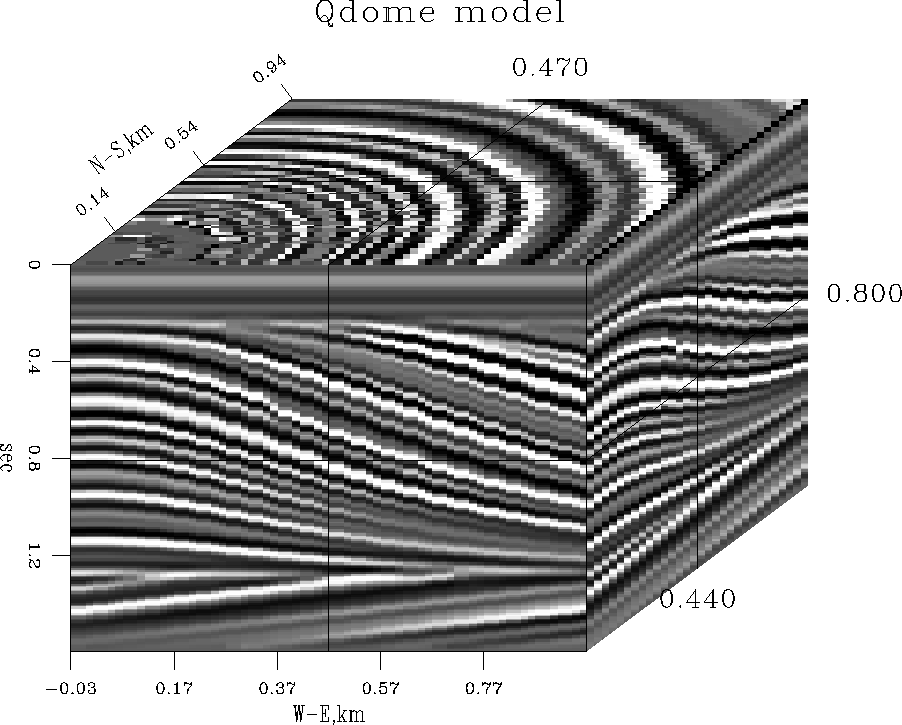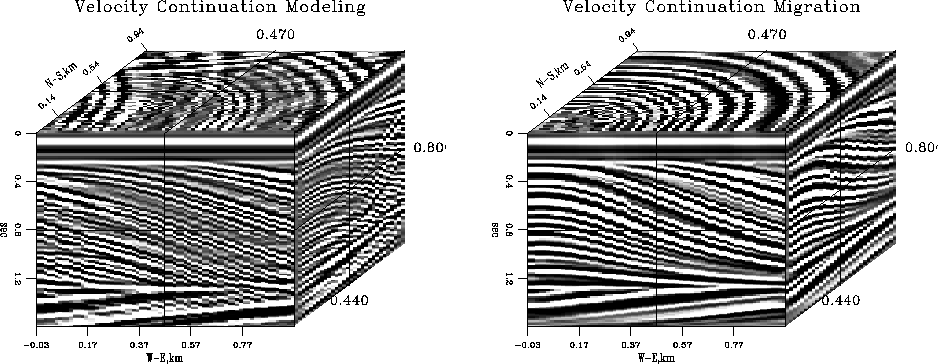Velocity continuation is a process of navigating in the migration velocity space, applicable for time migration, residual migration, and migration velocity analysis Fomel (1996a). In the zero-offset (post-stack) case, the velocity continuation process is described by the simple partial differential equation Claerbout (1986); Fomel (1994)
| |
(18) |
 |
The helix approach has allowed us to modify the old code for three dimensions. Figure 7 shows impulse responses of an implicit helix-based three-dimensional velocity continuation.
|
qdome
Figure 8 Qdome synthetic model, used for testing the 3-D velocity continuation program. |  |
Figure 9 illustrates the velocity continuation process on the Qdome synthetic model Claerbout (1997b), shown in Figure 8. Continuation backward in velocity corresponds to the ``modeling'' mode, while forward continuation corresponds to the ``migration'' mode. It is possible to balance the amplitudes of the two processes so that the finite-difference velocity continuation behaves as a unitary operator Fomel (1996a,b).
 |